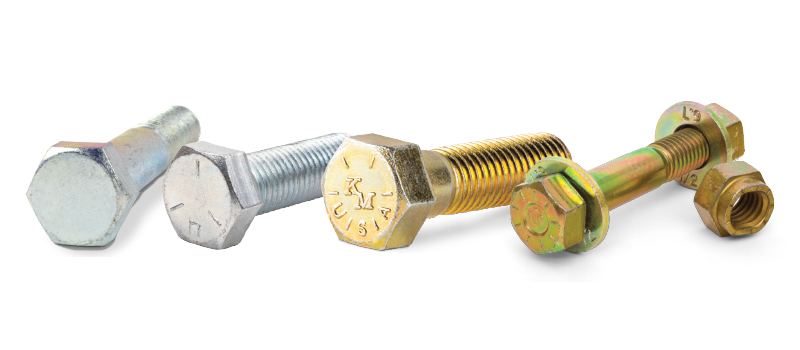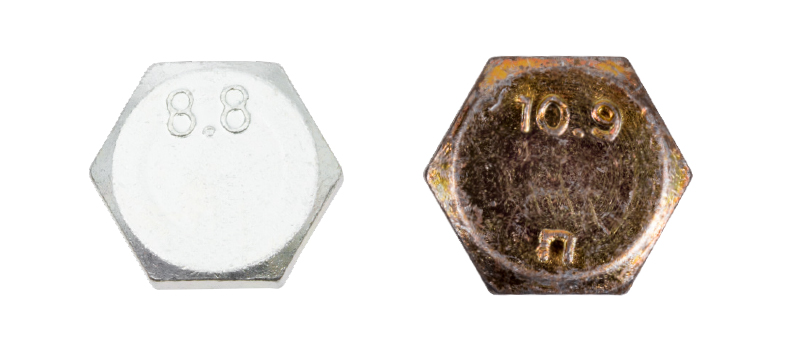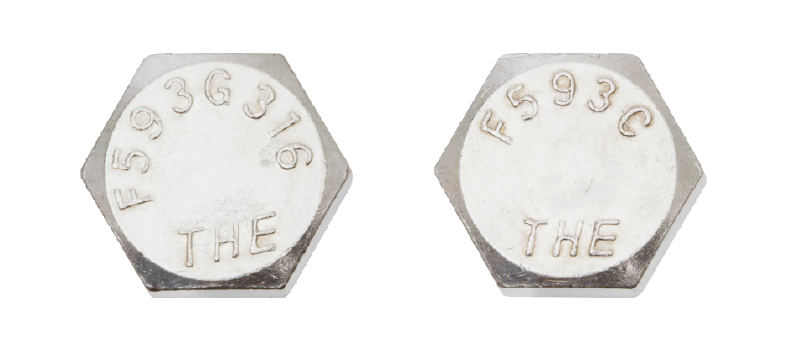Fasteners are an important component of many things we use every day, yet they often aren’t given much thought. It doesn’t seem like there is much to a cap screw or a nut, but they hold parts together and support weight loads. A faulty fastener assembly can mean catastrophic failure, resulting in equipment damage and downtime, lost productivity and personal injury.
It’s critical to know how fastener assemblies work. It’s not just a matter of threading a nut onto a bolt and tightening with a wrench. While some basics are covered below, a safety seminar can help you learn how to correctly match fastener components and apply the right amount of torque to ensure a strong and secure assembly.
Standard Cap Screw and Nut Specifications
Always use matching component parts. For example, if you use a Grade 5 cap screw, use a Grade 5 nut with it. Standard cap screws come in the following grades:
- Grade 2: These fasteners have no head markings. Their minimum tensile strength is 60,000 psi. The corresponding hex nut has no markings.
- Grade 5: These fasteners can be identified by head markings of three radial lines spaced 120° apart. They have a minimum tensile strength of 120,000 psi. The matching hex nut has either identical markings to the cap screw or a dot/radial line with a radial line 120° counterclockwise from it.
- Grade 8: The heads of these screws are marked with six radial lines spaced 60° apart. They have a minimum tensile strength of 150,000 psi. The matching hex nut can have identical markings to the cap screw or a dot/radial line with a radial line 60° counterclockwise from it.
- L9: These screws can be identified by nine radial lines on the head spaced 40° apart. Their minimum tensile strength is 180,000 psi. The matching hex nut has identical markings.
 The head markings are outlined by the Industrial Fasteners Institute, per specification of the Society of Automotive Engineers (SAE) and American Society of Testing and Materials (ASTM), to designate tensile strength and the type/quality of steel used.
The head markings are outlined by the Industrial Fasteners Institute, per specification of the Society of Automotive Engineers (SAE) and American Society of Testing and Materials (ASTM), to designate tensile strength and the type/quality of steel used.The grade indicates the material composition. For example, a Grade 2 cap screw is made from low carbon steel, while a Grade 8 is made from medium carbon or alloy steel.
Metric Cap Screw and Nut Specifications
Metric cap screws are used in many applications and are comparable to Grade 5 and Grade 8. It’s important to learn which is which so you choose the right bolt.
 While standard cap screw dimensions are fractions or threads per inch (TPI), metric cap screw dimensions are in millimeters.
While standard cap screw dimensions are fractions or threads per inch (TPI), metric cap screw dimensions are in millimeters.Stainless Steel Cap Screws
Stainless steel cap screws have the strength of a Grade 2 cap screw and are preferred in applications where high corrosion resistance is needed. They are available as the following:

Terminology
Torque, tensile strength, shear strength, tension, yield point, proof load … all these terms are important when it comes to fastener safety, but what do they mean?
Torque is the rotating effort needed to overcome turning resistance.
Tensile strength is the maximum load the fastener can support without breakage. The higher the tensile strength, the stronger the cap screw. This is the strength the fastener has as it is being pulled from either end.
Shear strength is the maximum load that can be attained prior to fastener fracture when applied at a 90° angle to the fastener’s length. Tension – also known as the holding power or clamping force – is generated by applying torque to a fastener assembly.
Yield point is the point at which the cap screw stretches and will not return to its original length.
Proof load is the ideal point to tighten a cap screw for maximum performance – just below the yield point.
During a safety seminar, you will get a visual demonstration of what these terms mean.
Safety Considerations
There are many things to consider when it comes to fastener assembly safety, but here are a few key points:
- It’s risky to reuse cap screws for critical applications because the threads elongate when the nut is tightened.
- Nuts should never be reused because torqueing causes the threads of the nut to compress.
- In mechanical applications, be sure to use alloy washers with nuts. Washers help distribute the load of the nut evenly to prevent surface damage while reducing the risk of the nut becoming loose.
There is so much more to know about fastener assemblies. Kimball Midwest regularly conducts free safety seminars, including one on fasteners. Topics covered in the fasteners seminar include:
- In-depth review of terminology.
- Review of fastener assembly component parts, including cap screws, hex nuts, lock nuts and washers.
- Review of torque tension.
- Testing of fasteners.
- Review of safety considerations.
.png?width=131&height=58&name=image%20(40).png)

